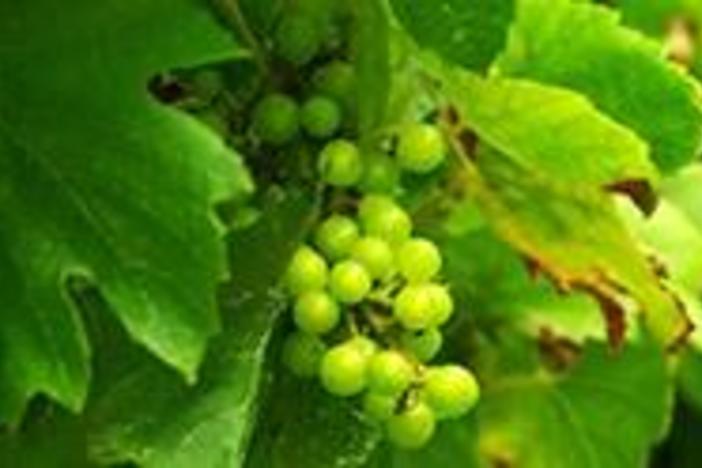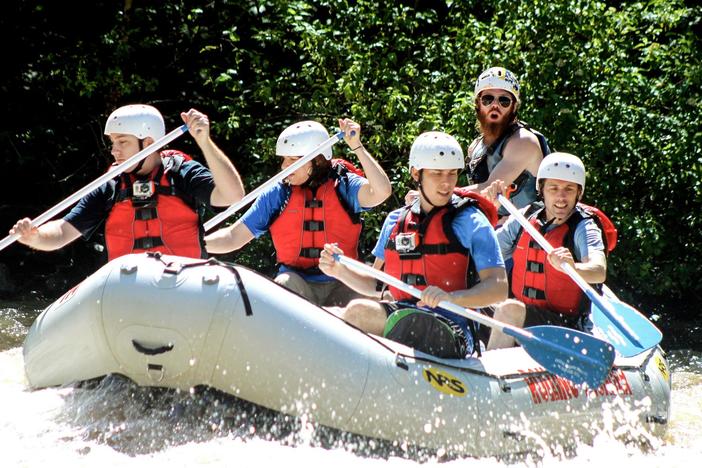Georgia Mountain Research And Education Center
The University of Georgia's College of Agricultural and Environmental Sciences invites us on a tour of its Mountain Research and Education Center, where we interview Dr. Wayne Hanna, one of the foremost turf growers in the world! He’s grown grass for sports complexes as far away as the World Cup Soccer Tournament in South Africa, and as close to home as UGA’s own athletic fields. Teachable Moments center around agriculture, including photosynthesis, the nitrogen cycle, and more.
Georgia Mountain Research And Education Center
The University of Georgia's College of Agricultural and Environmental Sciences invites us on a tour of its Mountain Research and Education Center, where we interview Dr. Wayne Hanna, one of the foremost turf growers in the world! He’s grown grass for sports complexes as far away as the World Cup Soccer Tournament in South Africa, and as close to home as UGA’s own athletic fields. Teachable Moments center around agriculture, including photosynthesis, the nitrogen cycle, and more.
Science
Ask questions to differentiate between plants, animals, and habitats found within Georgia's geographic regions.
Construct an explanation of how external features and adaptations (camouflage, hibernation, migration, mimicry) of animals allow them to survive in their habitat.
Use evidence to construct an explanation of why some organisms can thrive in one habitat and not in another.
Develop a model to describe the roles of producers, consumers, and decomposers in a community.
Develop simple models to illustrate the flow of energy through a food web/food chain beginning with sunlight and including producers, consumers, and decomposers.
Construct an explanation for the patterns of interactions observed in different ecosystems in terms of the relationships among and between organisms and abiotic components of the ecosystem.
Analyze and interpret data to provide evidence for how resource availability, disease, climate, and human activity affect individual organisms, populations, communities, and ecosystems.
Ask questions to gather and synthesize information from multiple sources to differentiate between Earth's major terrestrial biomes (i.e., tropical rain forest, savanna, temperate forest, desert, grassland, taiga, and tundra) and aquatic ecosystems (i.e., freshwater, estuaries, and marine).
Ask questions to investigate and provide explanations about the roles of photosynthesis and respiration in the cycling of matter and flow of energy within the cell (e.g., single-celled alga).
Ask questions to gather and communicate information about the use and ethical considerations of biotechnology in forensics, medicine, and agriculture.
Plan and carry out investigations and analyze data to support explanations about factors affecting biodiversity and populations in ecosystems.
Develop and use models to analyze the cycling of matter and flow of energy within ecosystems through the processes of photosynthesis and respiration.
- Arranging components of a food web according to energy flow.
- Comparing the quantity of energy in the steps of an energy pyramid.
- Explaining the need for cycling of major biochemical elements (C, O, N, P, and H).
Construct an argument to predict the impact of environmental change on the stability of an ecosystem.
Design a solution to reduce the impact of a human activity on the environment.
Construct explanations that predict an organism's ability to survive within changing environmental limits (e.g., temperature, pH, drought, fire).
Analyze and interpret data to construct an argument of the necessity of biogeochemical cycles (hydrologic, nitrogen, phosphorus, oxygen, and carbon) to support a sustainable ecosystem.
Construct and revise a claim based on evidence on the effects of human activities on natural resources.
- Human Activities
- Agriculture
- Forestry
- Ranching
- Mining
- Urbanization
- Fishing
- Water use
- Pollution
- Desalination
- Waste water treatment
- Natural Resources
- Land
- Water
- Air
- Organisms
Social Studies
Distinguish among the five geographic regions of Georgia in terms of location, climate, agriculture, and economic contribution.
Locate key physical features of Georgia and explain their importance; include the Fall Line, Okefenokee Swamp, Appalachian Mountains, Chattahoochee and Savannah Rivers, and barrier islands.
Identify and describe climates and locations of major physical features of North America. Explain how these physical characteristics impact settlement patterns including, but not limited to, the Mississippi River System, the Appalachian and Rocky Mountains, and the Canadian Shield.
1. We already know how things grow, why do we need to do research in agriculture?
2. One of the latest breakthroughs in agriculture technology is drones. How might they be used to assist farmers?
Forage Grass: grasses for pasture, or for grazing animals to eat
Turf Grass: grasses used for covering recreational areas like golf courses, sporting areas, lawns, and roadways
Agronomy: a science that deals with the methods used by farmers to raise crops and care for the soil
Microbiology: a science that studies extremely small forms of life (such as bacteria and viruses)
Acreage: land measured in acres
Nitrogen Cycle: circulation of nitrogen in various forms through nature
Hypothesis: an idea or theory that is not proven but that leads to further study or discussion
Photosynthesis: the process by which a green plant turns water and carbon dioxide into food when the plant is exposed to light
-
Special Thanks
Dr. Wayne Hanna, Joseph Garner, Faith Peppers, UGA College of Agriculture and Environmental Sciences, Jessica Ivette Loggins, City of Blairsville
This content was developed under a grant from the U.S. Department of Education. However, this content does not necessarily represent the policy of the U.S. Department of Education, and you should not assume endorsement by the Federal Government.







